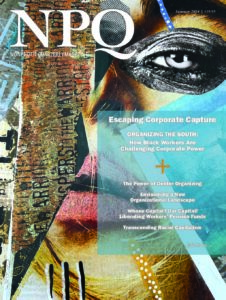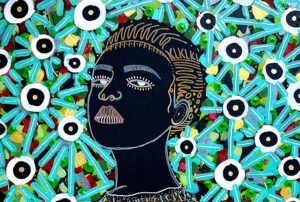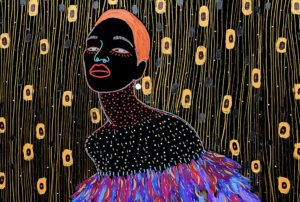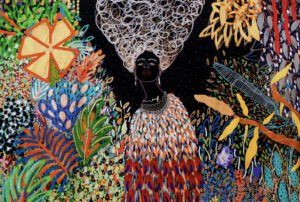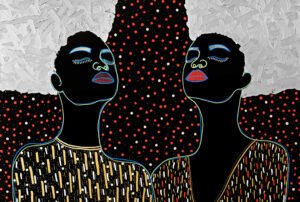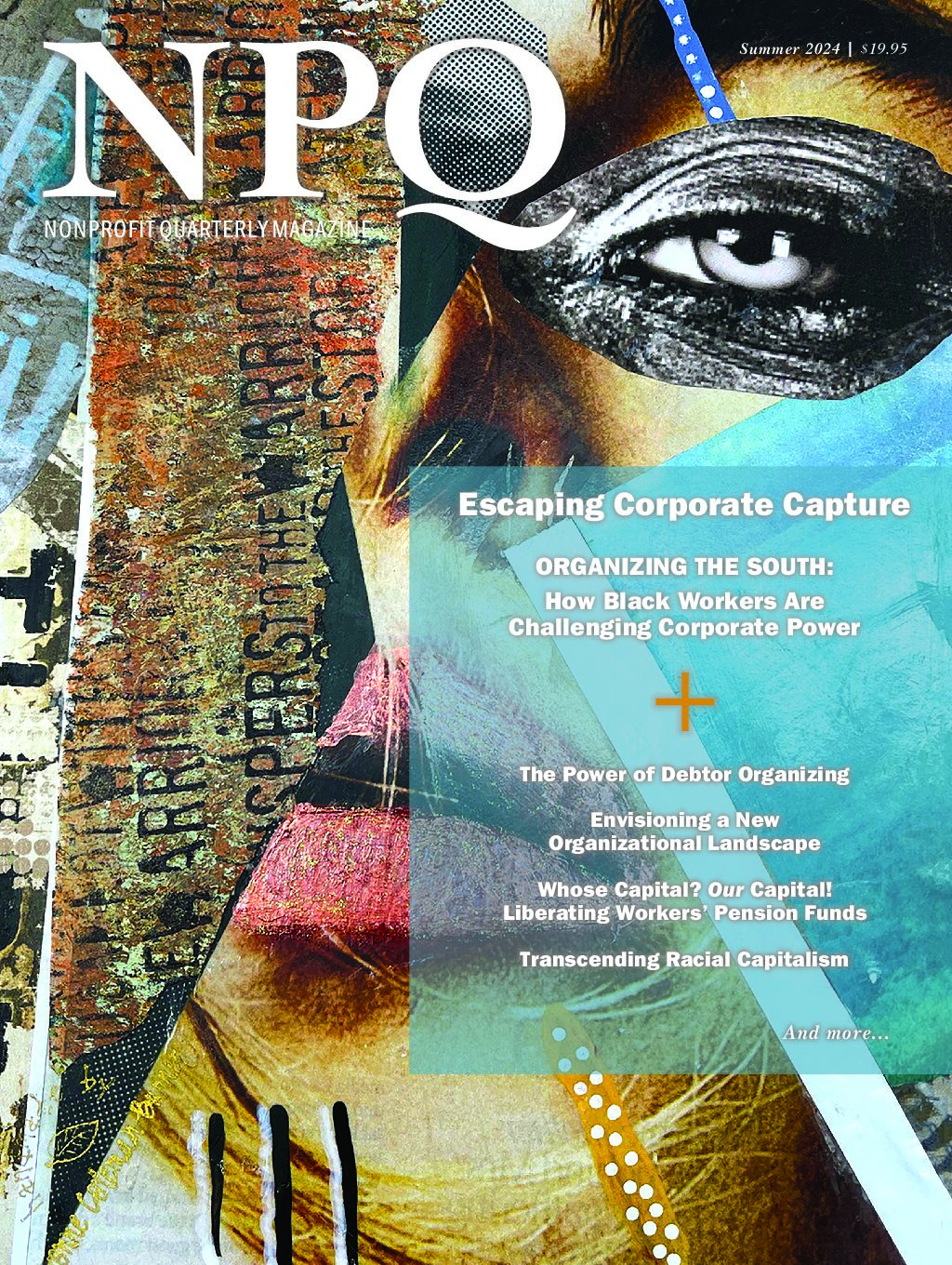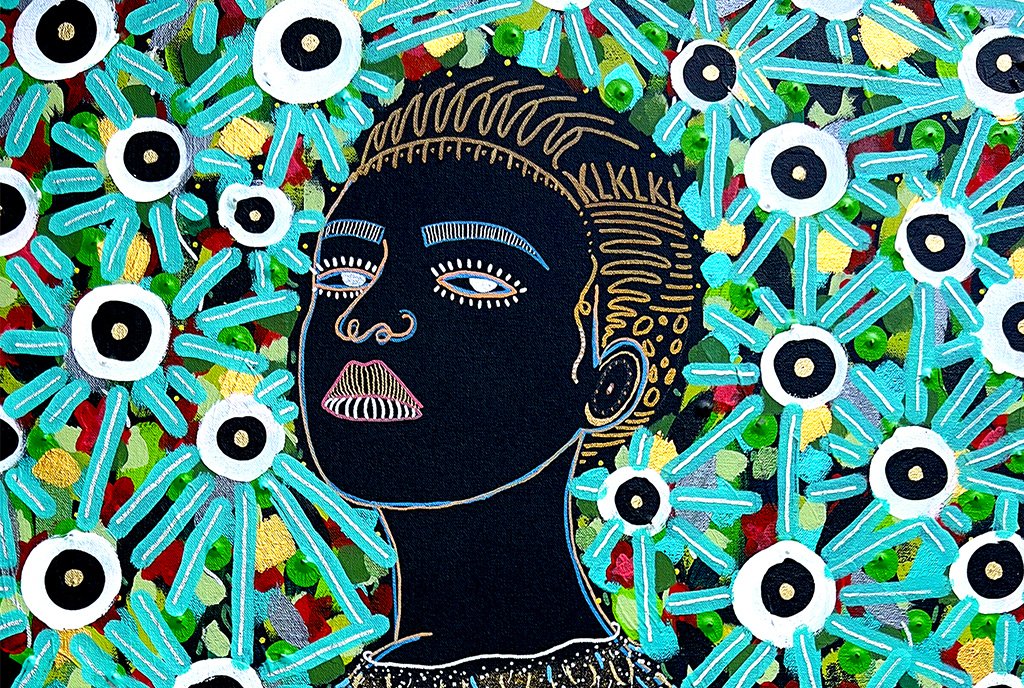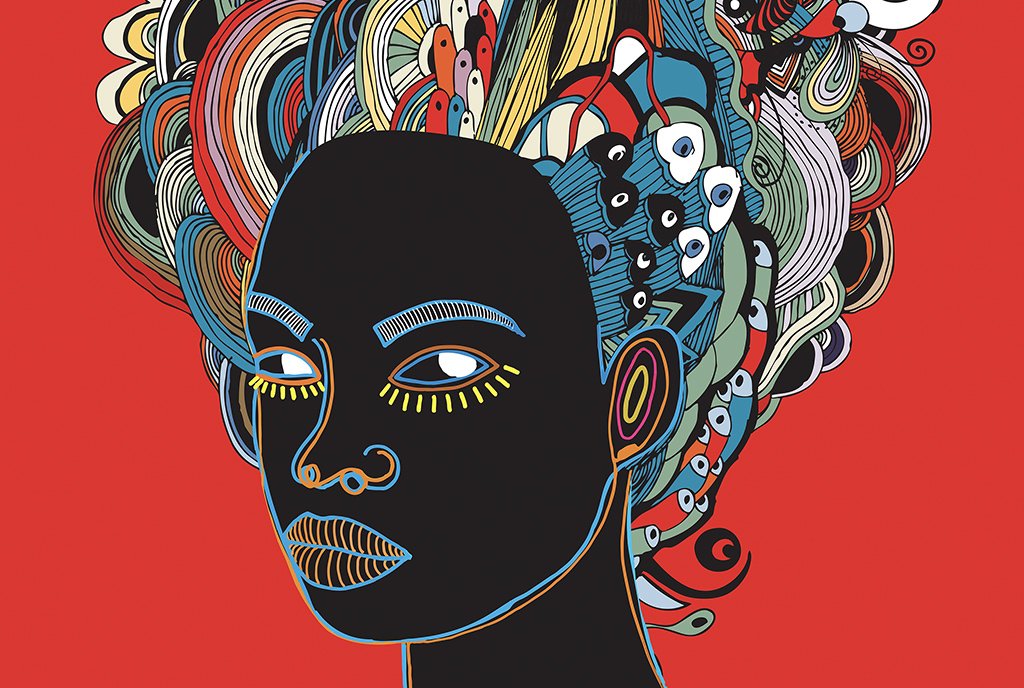
Editors’ note: This piece is from Nonprofit Quarterly Magazine’s spring 2024 issue, “‘Stop Drowning Us, and Stop Making Us Disappear’: A Critical Report on the State of Black Woman Leadership.”
I, among many other Black leaders, have struggled with cultural challenges inside the racial justice organization I run. Last fall, when Ibram X. Kendi’s Center for Antiracist Research at Boston University became the latest racial justice organization to undergo scrutiny,1 I realized it was time to tell my story.
The financial struggles and cultural issues of progressive organizations, especially those focused on racial justice, have been hot topics over the last 18 months. Many recent essays on the subject, from Maurice Mitchell’s “Building Resilient Organizations”2 to The Forge’s conversation among five movement leaders discussing Tema Okun’s article “White Supremacy Culture,”3 have covered the internal challenges many organizations are facing. As the cofounder and CEO of Liberation Ventures, an organization focused on accelerating the Black-led reparations movement, I know that despite the increase in conversation, it remains difficult and necessary to walk the talk of shifting internal organizational cultures to align with the world we’re trying to build.
The New York Times has characterized this moment as a “fever breaking” and “the left eating itself,” but these analyses are incomplete.4 To get to solutions, we must develop a deeper, root-cause-level diagnosis of what is happening. Why are people weaponizing Okun’s article—as she describes,5 using it “to accuse, shame, and blame in ways that perpetuate disconnection”?6 Why are so many nonprofit employees feeling the need to unionize?7 Why are coleadership models proliferating (and sometimes failing)?
These challenges have sometimes been productive, helping me to identify and root out harmful patterns, such as perfectionism. Other times, they have been weaponized in ways that policed my Blackness, eroded accountability across the organization, and reduced me to racist stereotypes.
One fundamental issue driving these dynamics is our sector’s collective relationship to power. Many who fight for freedom and liberation are used to being abused by power, and that abuse creates trauma. We often don’t trust power—and as a result, it is hard to admit when we have it and learn to use it more effectively. As a sector, we need to transform our relationship to power. We must learn to name it, own it, work with it, and intentionally distribute it. In order to do that, we must build reparative organizations. Together, we must heal.
The stakes are high. Authoritarianism is at our doorstep, and we will need a broad coalition to force its retreat. Organizers have worked tirelessly over the last several decades to ripen the issue of structural racism and police violence, which created a window of opportunity for progress that will eventually close. Our organizations exist to achieve important goals, and when we’re consumed by painful turmoil internally, it becomes increasingly impossible to focus on those goals. To meet these challenges of our time, we must work together across difference to build the strong, multiracial organizations and democracy we all deserve.
Self: The Impact on Leaders and Organizations
As the CEO of Liberation Ventures, I am in perpetual inquiry around how to build a healthy, aligned organizational culture. I have tried coleadership models that failed, and Okun’s article has been wielded against me in painful ways. These challenges have sometimes been productive, helping me to identify and root out harmful patterns, such as perfectionism. Other times, they have been weaponized in ways that policed my Blackness, eroded accountability across the organization, and reduced me to racist stereotypes.
With hindsight—and full acknowledgment that I and Liberation Ventures remain a work in progress—I can zoom out and see how the challenges our organization faced were heavily influenced by our broader external context. But at the time I faced those challenges, I couldn’t; everything felt personal. After a decade of working in racial justice, much of my identity was built on having a sharp critique and showing up in ways that advance the work. I had run programs and campaigns focused on youth and community development, and had organized for racial equity in my schools and workplaces. Failing at coleadership and being associated with White supremacy culture consumed me with shame.
This propelled a cycle of harm that stunted Liberation Ventures in its early days. My shame caused me to bend over backward to meet others’ needs, disregarding my own boundaries for fear of further failure and disconnection. That fear led to standards of perfection that I could not meet, which led to feelings of unworthiness, inadequacy, and, ultimately, more shame. The cycle continued.
On a day-to-day basis, I blamed myself, lost confidence, and made myself smaller. I was timid in external meetings and afraid to build relationships with peers, because deep down I wondered if there was something wrong with me. I prioritized minimizing conflict and did not raise sensitive issues with my team, which led to miscommunication and misalignment. I didn’t understand or own the power I did have, which meant I wielded it unconsciously in unhelpful and sometimes harmful ways. Talented potential hires sensed something was off and decided not to join our team, limiting our capacity at crucial moments. My judgmental internal monologue drained my energy and mood, making it hard for me to show up with the joy and abundant mindset the work deserves. I constantly questioned my judgment, and, at my lowest low, my entire worth. Leadership is always difficult, but this time was especially debilitating.
The dynamic is especially painful when traditional power structures are inhabited by people of color, because those leaders are already held to higher standards than their White counterparts. It feeds racist tropes about how leaders of color, especially Black women, are supposed to operate.
I now understand that many people, especially leaders and entrepreneurs in our sector, have gone or are going through something like this. On the positive side, realizing how widespread these issues are enabled me to develop a much more systemic diagnosis of the problem, which has helped me to own my mistakes, depersonalize the issue, and heal. Yet simultaneously, thinking about what my organization and I have been through, applying that more widely to the sector, and understanding the scale of the harm it has caused to our movement’s greatest asset—our people—has been horrifying.
Harm requires repair. Liberation Ventures has been explicitly focused on building a culture of repair inside our organization over the past couple of years. We are making mistakes, learning, and growing. But our commitment to repair inside our organization is helping us do the micro level version of what our nation must do at the macro level to build a strong multiracial democracy: hold breakdown, conflict, and grief with care and respect, and build new systems for naming and distributing power. I’m sharing our story with hope that our journey may be instructive to others on the same path.
Root Causes and Implications
I consider myself a lifelong student of power—its rules, its contradictions, its benefits, and the challenges that it confers. I define it as the ability to influence my own or another’s circumstance. I’ve learned that it is never neutral; it either helps or harms.
Power can feel shameful to have—especially as a person of color—because it is so often associated with its abuse. Leadership coach, strategist, and racial equity advocate Karla Monterroso has developed a detailed taxonomy of different forms of power, including historic forms like wealth and institutional authority.8 In addition, she notes new forms of cultural power, such as a megaphone (e.g., social media followers), identity capital (e.g., informal authority conferred by a specific identity in a specific context), access to information and technology (e.g., having the internet at our fingertips), and compelling communication (e.g., oration, writing, building a pitch deck).9 Understanding these various kinds of power is critical—because when we don’t understand our own power, we are more likely to unintentionally abuse it.
Although many progressive organizations are externally focused on building power, we often have trouble internally identifying what power looks like within our organizations, where that power sits, and why. This amplifies feelings of powerlessness, especially for those without positional power, and leads to struggles to change power differentials.
Weaponizing Okun’s article is one way members of progressive organizations sometimes attempt to rebalance power. While the document can be useful to surface cultural dynamics, it can also be weaponized against leaders—especially leaders of color—in oversimplified, unspecific ways that leave leaders with little insight on how they can improve their leadership. Okun herself laments that her work has been used in this way.10 The most dangerous part of this dynamic is that it is often unconscious; weaponizing Okun’s document is an exercise of power, yet those who weaponize it often believe that they have no power at all.
The dynamic is especially painful when traditional power structures are inhabited by people of color, because those leaders are already held to higher standards than their White counterparts. It feeds racist tropes about how leaders of color, especially Black women, are supposed to operate (e.g., as emotional caretakers and/or strong Black women) and reinforces the message that leaders of color must be twice as good. We all know that traditional institutional structures are failing us and that we need to reinvent them, but we don’t know how. We expect Black women to have all the answers—but we Black women are human, too.
This dynamic also disregards one of the most fundamental truths most progressive organizations hold: people’s structural and positional conditions have a huge impact on how they act. For example, we know criminality is not inherent in people; crime is a symptom of systemic forces that cause trauma, disenfranchisement, and need. This is why our movements focus on fixing structures and systems, not people. The rush to label organizational practices of a Black leader as sustaining White supremacy culture is rarely about an individual person’s character but rather is about the pressures they are under, interests they must manage, and the authority role they hold.
Sign up for our free newsletters
Subscribe to NPQ's newsletters to have our top stories delivered directly to your inbox.
By signing up, you agree to our privacy policy and terms of use, and to receive messages from NPQ and our partners.
When we expect perfection in leadership, we give up our individual and collective power, and the entire enterprise suffers. This is true in our organizations as well as our nation.
There is good reason why this happens. People of color, especially Black people, have been traumatized by people in power our whole lives—in our workplaces, churches, schools, and streets. The past decade has finally helped us to build the identity capital we need as a movement to push back, and we are doing so in full force. Yet instead of taking a more nuanced perspective about the services that authority figures provide—direction, protection, and guidance—and evaluating what an organization needs and when, too often we throw the baby out with the bathwater and reject authority wholesale, resulting in the antileadership and anti-institutional attitudes that Mitchell discussed in his article.11
If a feeling of powerlessness is a driving force behind Okun’s document being weaponized, that powerlessness looks different for people with different identity characteristics. The Forge’s article commented on the irony of White staff wielding it against leaders of color.12 I believe this happens because in social justice spaces, Whiteness often operates opposite the mainstream: instead of increasing a person’s identity capital, it decreases it. Rightly, our sector’s push to center those with lived experience of the problems we are trying to solve means that in racial justice organizations, Whiteness decreases one’s authority. Therefore, White people who are used to their Whiteness conferring power experience a sense of loss. Okun’s article then becomes a tool to try to manage that loss, escape accountability to someone else (often a person of color), and regain control.
The target may be the authority role, but the person in the role becomes collateral damage. Reducing a person to their role is dehumanizing, and it is exactly the kind of exploitative practice that Okun’s article, and our movement, purport to abhor. It is critical for mid- and lower-level staff to understand that the leaders of their organizations are human, too—and often forced to make heartbreaking trade-offs amid extreme pressures to keep their organizations afloat. Leaders must hold themselves accountable for creating a healthy and compassionate work environment, and face consequences when they do not. Leaders also deserve to feel seen and cared for in the work, and compassion across levels of power and authority is critical to building just and equitable organizations and a just and equitable world.
As a movement, we need an interdependent relationship with power rather than a dependent or counterdependent one. Most authority figures are neither enemies nor saviors but rather imperfect humans with specific influence who can help get things done—but who cannot be effective alone. This means we must be willing to work with them, not just for (or against) them. Seeing the humanity in our leaders is critical not only for healthy organizations but also for a healthy and just multiracial democracy. At the state level, if we believe that politicians are perfect and supposed to solve all our problems, we give away our agency as a constituency: we put less pressure on elected officials to fulfill campaign promises, we make fewer policy recommendations and demands, and we pay less attention to what elected officials are getting done. This posture toward government accelerates a decline into authoritarianism, because it allows political leaders to become less accountable to the people they represent. When we expect perfection in leadership, we give up our individual and collective power, and the entire enterprise suffers. This is true in our organizations as well as our nation.
Orienting the sector toward repair would allow leaders and organizations to make mistakes, learn from them, and become stronger in the process.
A Framework for Repair
How can progressive organizations internally improve their ability to name, own, and distribute power? To do so, we have to begin to heal from our traumatic relationship to power—and all of us must become agents of repair.
At Liberation Ventures, our vision is to build a culture of repair in this nation. We define repair as four distinct components in an iterative cycle: reckoning, acknowledgment, accountability, and redress. Reckoning means learning and deeply understanding harm; acknowledgment means naming and voicing that understanding; accountability means taking ownership and responsibility for repair; and redress means restitution, rehabilitation, and taking proactive steps to heal the wound.13
We recently published a report, A Dream in Our Name, that outlines this repair framework and its lineage in more detail.14 It builds upon elements of transitional justice, transformative justice, restorative justice, and abolition. These words from Malcolm X can help us understand the repair process: “If you stick a knife in my back nine inches and pull it out six inches, there’s no progress. If you pull it all the way out, that’s not progress. The progress is healing the wound that the blow made.”15 Reckoning understands how and why stabbing occurred. Acknowledgment admits the knife is there. Accountability removes the knife. Redress treats the wound.
At Liberation Ventures, we believe this racial repair framework can operate from the micro to the macro, and we use it internally when someone causes harm, so as to build a culture of repair. It is not only applicable to us—it is also an offering to our sector as a tool to repair harm from the many challenges facing our organizations. We make this offering with humility and hope: we do not have all the answers, and we still have many unanswered questions about what is required for real repair—and yet we know hope is a discipline. Perhaps if we are disciplined about building a culture of repair within the fractal of our movement, we’ll be one step closer to doing so across our nation.
All four components of our repair framework are critical—alone, they are unsatisfactory. Together, they make each other real. Furthermore, this framework doesn’t work with one-time application. It must be a constant practice, embedded into the culture of our institutions and sector at large. We created a tool based on this framework, to support organizational leaders, staff, and other actors across the sector to become active agents of repair.16 Teams can initiate facilitated conversations on the questions the tool poses. Management and DEI consultants can help clients not only create inclusive cultures but also name and work with power within their organizations in new ways. Funders can designate funds for coaching, team facilitation, and wellness, and they can eliminate tedious measurement and reporting requirements that unnecessarily pressure grantees. Board members can broach the topic of repair with leadership teams to understand in detail what is happening inside the organizations they govern: where leaders need support, where staff have complaints that must be addressed, and, most important, how boards can adapt their governing structures to promote transparency, repair, and distribution of power.
Orienting the sector toward repair would allow leaders and organizations to make mistakes, learn from them, and become stronger in the process. In response to the critique of his center, Kendi wrote:
Leaders of color and women leaders are often held to different standards and routinely have their authority undermined or questioned. But I want to live in a world where all leaders of new organizations are given the time to make mistakes and learn and grow. I want to live in a world where all new organizations are given the time to have growing pains and develop. I want to live in a world where we are all about building and sustaining antiracist organizations.17
I want those things, too, and repair is required to get there. Our sector and nation must be able to hold not only difference but also the alchemy of real belonging across difference. Holding difference enables us to reap the benefits of the wide variety of skills, assets, and experiences—and the generative conflict they create—that enable us to thrive and win. The challenges of our time require us to build a culture of repair, because difference can and will cause breakdown, and our organizations, coalitions, and democracy are only as strong as our ability and willingness to repair it.
I would like to express immense gratitude for adrienne maree brown, Holly Fetter, Dr. Shawn Ginwright, Jennie Goldfarb, Erin Heaney, Ron Heifetz, Michael McAfee, Maurice Mitchell, Karla Monterroso, Garrett Neiman, Solana Rice, and Jennifer Wynn, whose writing, coaching, and/or thought partnership helped shape this piece.
Notes
- “Mike Damiano and Hilary Burns, “Following layoffs, Boston University announces ‘inquiry’ into Ibram Kendi’s Antiracist Center,” Boston Globe, last modified September 20, 2023, bostonglobe.com/2023/09/20/metro/following-layoffs-boston-university-announces-inquiry-into-ibram-kendis-antiracist-center/.
- Maurice Mitchell, “Building Resilient Organizations: Toward Joy and Durable Power in a Time of Crisis,” NPQ, The Forge, and Convergence, November 29, 2022, nonprofitquarterly.org/building-resilient-organizations-toward-joy-and-durable-power-in-a-time-of-crisis/.
- Sendolo Diaminah et , “How (Not) to Dismantle White Supremacy,” The Forge, April 20, 2023, forgeorganizing.org/article/how-not-dismantle-white-supremacy. And see Tema Okun, “White Supremacy Culture,” orig. pub. 1999, www.whitesupremacyculture.info/uploads/4/3/5/7/43579015/okun_-_white_sup_culture_2020.pdf; and “White Supremacy Culture”/“(divorcing) White Supremacy Culture: Coming Home to Who We Really Are,” accessed January 31, 2024, www.whitesupremacyculture.info/.
- Michelle Goldberg, “The Left’s Fever Is Breaking,” New York Times, December 16, 2022, nytimes.com/2022/12/16/opinion/left-activism.html; and Maurice Mitchell, “The Left Is Eating Itself,” Lulu Garcia-Navarro, First Person podcast, New York Times, January 26, 2023, www.nytimes.com/2023/01/26/opinion/the-left-purity-politics.html.
- “White Supremacy Culture”/“(divorcing) White Supremacy Culture: Coming Home to Who We Really ”
- “White Supremacy Culture Characteristics,” White Supremacy Culture, accessed January 31, 2024, www.whitesupremacyculture.info/characteristics.html.
- Jim Rendon, “Why workers at growing number of nonprofits are unionizing,” Associated Press, January 31, 2023, apnews.com/article/labor-unions-southern-poverty-law-center-business-race-and-ethnicity-7fd961c88c614db47db63ffcd80e084e.
- Conversation with the author, March And see Karla L. Monterroso, “When We Get Power,” Medium, May 21, 2021, medium.com/zebras-unite/when-we-get-power-c8b22df78b42.
- Conversation with the author, March
- “Tema Okun on Her Mythical Paper on White Supremacy,” Ryan Grim, Deconstructed (podcast), The Intercept, February 3, 2023, theintercept.com/2023/02/03/deconstructed-tema-okun-white-supremacy/.
- Mitchell, “Building Resilient ”
- Diaminah et , “How (Not) to Dismantle White Supremacy.”
- See Aria Florant, “An Orienting Framework for Repair,” Medium, January 7, 2021, medium.com/an-orienting-framework-for-repair-464aad9014b5.
- Aria Florant, A Dream in Our Name (New York: Liberation Ventures, 2023).
- Mateo Askaripour, “Falling in Love with Malcolm X—and His Mastery of Metaphor,” Literary Hub, April 10, 2019, lithub.com/falling-in-love-with-malcolm-x-and-his-mastery-of-metaphor/.
- “Liberation Ventures_Building A Reparative Organization_Framework & Tool,” accessed January 31, 2024, google.com/document/d/1_fG15dnrZac8OVLNyu0BFTnaNoykjGx83_VlInKjb6M/edit.
- Ibram X. Kendi (@Ibramxk), “Statement on Center for Antiracist Research Layoffs,” Instagram, September 22, 2023, www.instagram.com/p/CxgJixhrweD/.



